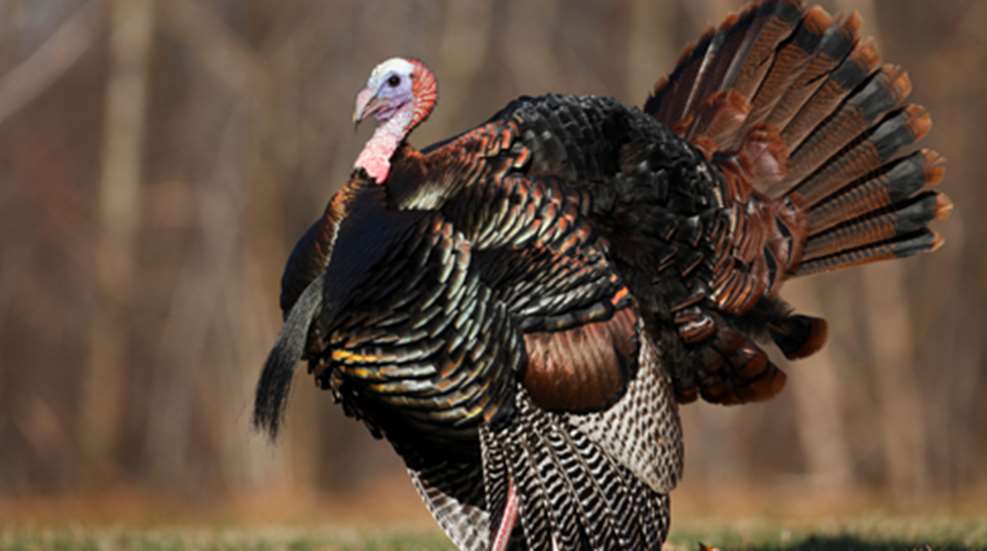
Fall turkey hunting is full of action, particularly for those hunters who love to call a lot, and with hens legal virtually everywhere fall hunting is allowed, it is a great chance to get even with those birds that seem to foil a good share of your springtime attempts at tagging a big gobbler. Try the following strategies for a can’t-fail day of hunting.
1. Forget the Break
Read any article or talk to any fall turkey hunter and a lot of strategy at this time of year revolves around busting up a flock of birds before calling them back to you. Turkeys, particularly jakes and jennies, are eager to hang out with other birds in the fall. Upon being scattered, many of these young birds will begin calling within 10 to 30 minutes (sometimes even less) in an attempt to regroup, with most working back to the spot where they were just before being spooked. It’s without a doubt a great way to work birds back to the call. However, properly busting the birds can be a challenge for some hunters, particularly older hunters or hunters without a good turkey dog. You basically have to run at the flock or fire your gun near them to spook them toward different directions. If they all run or fly off together, there will be no need for them to call to get back together and you’ll have to attempt to break them again.
But busting birds isn’t an absolute prerequisite for success. In fact, hearing or spotting birds in a field or through the woods in a location where sneaking up on them and making a good break seemed near impossible, I have simply set up and started calling. If you can get one bird to respond, there’s a great chance the entire flock will drift your way, putting at least a few outliers in the flock within gun range. Fall turkeys are almost as curious as a whitetail, though much more cautious, so next time making a good break looks like it will be a challenge, set up as close as you can get and simply start calling to the flock with some plaintive yelps and kee-kees.
2. Match the Call
When working fall birds your direction—particularly hens or young birds—the idea is to create a frantic sense of urgency to be together. To do this, whether after a break or simply working an entire flock your way, call plaintively until a bird responds. As soon as one does, hit it back with the same call and frequency as the responding bird. I don’t know whether such calling irritates them or encourages them, but matching a turkey’s every yelp, cutt, kee-kee or purr is your ticket to getting young birds worked into a frenzy that will ultimately drive them right to you gun.
While any call works great for this, I really like a mouth call best for fall hunting. To me, it gives the caller a broader range of vocalizations that, with practice, allows him to perfectly mimic any call a real bird will throw at a hunter. It also provides hands-free use. With the potential for multiple birds simultaneously approaching from different directions, anything that minimizes a hunter’s movement is a good thing.
3. Be Early
Since wild turkeys hit the ground at sunup and roam about for the balance of the day before roosting just prior to dusk, many fall hunters don’t worry too much if they aren’t in position until well after sunrise. This can be a big mistake unless you are certain where a flock will be loafing and feeding after flydown. Why? Because, just like in the spring, fall turkeys tend to be more vocal as they prepare to leave the limb and are particularly noisy as they work to regroup on the ground. If you’re not there to hear all the commotion, you’re missing a great opportunity to pinpoint birds before they are even off the limb and make for a quick hunt by slipping in and working them to the gun as they seek the rest of the flock in the first light of morning.
4. Get Wet
Like humans, turkeys hate the rain. But unlike humans, they have nowhere to go to get out of it. What they tend to do on rainy days, however, is head to the fields. Wet woods are dangerous woods for turkeys as the wet leaves muffle the sounds of approaching predators, and dripping limbs and leaves add to the movement around them, making it harder to discern an approaching threat. Hit the open areas during or just after a heavy rain and you’ll be in position to score quickly and easily.
5. Cluck for Toms
Perhaps the ultimate prize for any turkey hunter is the taking of a gobbler in fall. Without the love-struck mentality of spring, longbeards hang with other gobblers in the fall, and whether running with just one or two or a band of eight, all are usually keeping pretty wary. When you happen upon a band of toms you’ll almost always need to break them up in order to call them back in. Gobblers are typically less frantic about rejoining the group and can take hours before they are able to be called back in, though I have seen lone birds show back up to the spot of a break in as little as 30 minutes later. Take your time setting up on the break and instead of a lot of hen yelping and cutting, go with deep-pitched clucks—just one or two—every four to five minutes or deep, slow jake yelps. Gobblers will come in on high alert and for that reason you need to be patient and still. They will often come in silently, so listen closely for footfalls in the leaves and the occasional cluck as well. If you tag out on a longbeard at this time of the year, feel free to consider yourself one of the biggest, baddest woods-wise hunters in the land—even more so than your Midwestern buddy who shot a 160-inch buck from a treestand overlooking a corn field. Your task was much harder to accomplish!





































